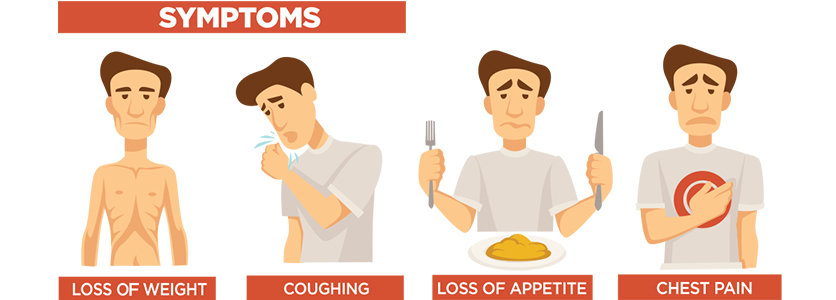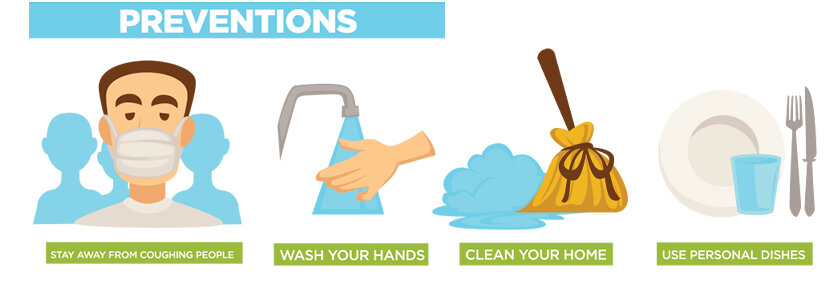Tuberculosis (TB) is the leading cause of death related to infectious diseases worldwide. According to the World Health Organisation (WHO), it is estimated that TB is responsible for 8.6 million new cases in 2014 and approximately 1.5 million deaths. Locally, TB is rampant, with an incidence rate of about 80 patients in 100,000 population.
The main route of transmission of TB is airborne. When a person is infected with TB, a disease of the lungs, whenever he coughs, speaks, or sneezes, the TB germs are spread into the surrounding air. A nearby person becomes infected by means of breathing in the TB bacteria. The bacteria can settle in the lungs and begin to grow. From there, they can move through the blood to other parts of the body, such as the kidney, spine, and brain if the person is immunocompromised.

Most commonly, a TB patient’s lungs are affected. Symptoms include coughing that lasts three or more weeks, coughing up bloody sputum, chest pain, or pain with breathing or coughing, unintentional weight loss, fatigue, fever, drenching night sweats and decreased appetite. Fifteen to 20 per cent of TB can also affect other parts of your body, including your kidneys, spine, guts or brain. When TB occurs outside your lungs, organ-specific symptoms may be the presenting complaints. For instance, TB of the gut may bring about chronic diarrhoea, and tuberculosis in your kidneys might cause blood in your urine.
If someone is suspected to have TB or has come into contact with a TB patient, they should go to their doctor or local health department for tests. There are two tests that can be used to help detect TB infection: a TB skin test or TB blood test. The skin test is the one that is most often used to detect TB. A small needle is used to put a testing material called tuberculin, under the skin. In two to three days, you return to your health care worker who will check to see if there is a reaction to this test. In some cases, a TB blood test is used to test for TB infection. This blood test measures the reaction of a person’s immune system against the germs that cause TB.
A diagnosis of pulmonary TB can be reached when the patient displays a typical clinical presentation, classical chest x-ray changes and positive sputum (phlegm that is coughed up from deep in the lungs) smears for TB which are Acid-Fast Bacilli (AFB). Generally, a clinician collects phlegm samples for three consecutive days to smear for AFB. This practice has a sensitivity of TB detection approximately 70 per cent when the culture-confirmed TB disease is the reference standard. To tell if someone has TB disease, other tests such as chest x-ray and a sample of sputum sent to culture the deadly bugs, may be needed.
People with TB need to promptly seek treatment, know how to take their TB drugs properly and complete the full course of medicines prescribed. Commonly, the treatment involves taking four medications for six months. It is vital to understand that if TB patients stop taking the drugs prematurely, they can fall sick again. If they do not take the drugs correctly, the germs that are still alive may become resistant to standard drugs or difficult to treat in the future. In addition, they need to fulfil all their doctor appointments. They also need to know how to make sure that they do not pass TB on to other people during their first few weeks of treatment, or until their doctor says they are no longer contagious by observing cough etiquette and respiratory hygiene.
Cough etiquette means that you cover your mouth with a tissue when you cough or sneeze. It is prudent to seal the tissue in a plastic bag, then dispose it into a bin. If you do not have a tissue then you should cough or sneeze into your upper sleeve or elbow. You should not cough into your hands. You should wash your hands after coughing or sneezing.
A TB patient should wear a face mask during the infectious period as it can mitigate the spread of Mycobacterium tuberculosis (the bacteria responsible for TB) from the patient to other people. The face mask plays a vital role in capturing huge moist particles near the mouth and nose of the patient, preventing the germs from being released into the surroundings.
It is advisable for patients infected with TB in the early phase of the disease to sleep alone in a separate, adequately ventilated room, if possible. Avoid using public transport and stay home from work, school, or other public places where large numbers of people gather, minimise social gatherings or interactions and use a fan or open windows to circulate fresh air.
As the common maxim goes, prevention is better than cure. The first step to halt the transmission of TB from one adult to another is identifying people with active TB, and then curing them through the provision of drug treatment. With proper TB treatment, someone with TB will very swiftly not be contagious hence can no longer spread TB to others.

Another crucial armamentarium in the fight against TB is the Bacillus Calmette-Guerin (BCG) vaccine, which was invented in the 1920s. It is one of the most widely used vaccine of all current vaccines. It has inoculated more than 80 per cent of all new-born children and infants in countries where it is part of the national childhood immunisation programme. Although it has been proven to protect children against the disseminated forms of TB, it occupies a lesser role in interrupting transmission among adults.
We also need to ensure certain susceptible individuals who have conditions that make the body weaker and difficult to fight off the TB bacteria to stay away from TB patients as much as possible. These high-risk group includes people with HIV infection, illicit intravenous drug users, babies and young children, elderly people, people with certain medical conditions such as diabetes mellitus, certain types of cancer, and being underweight.
If you are infected but untreated, you can end up with such complications as lung function damage, systemic spread of the bacteria to other parts of your body causing bone pain, meningitis, kidney or liver malfunction. In worse case scenario, mortality can befall the untreated patients.
In conclusion, TB is not only contagious and deadly, but also highly preventable and curable. Heightened public awareness in early detection, treatment, and a diligent completion of the full course of treatment, following the do’s and don’ts when infected, it is possible to curb the transmission of TB thus leading the way forward to a TB-free society in the future.
This article first appeared in Natural Health, Vol.118, March 2021.
Share:
Was this article helpful?
Share:
Was this article helpful?
Health Packages
Elevate your health with tailored health packages at Columbia Asia Hospital. Take charge of your health journey today.
HLA Policyholders Promo: Influenza Vaccination
RM65
Find Out MorePink October 2024
From
RM80
AIA Policyholders Self-pay Benefits
Pink October 2025
From
RM80

